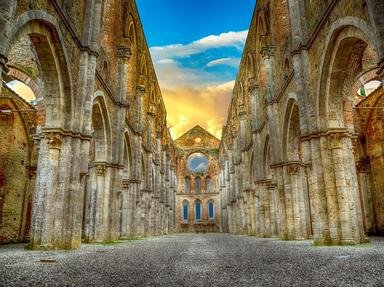Quiz Answer Key and Fun Facts
1. July 30, 1119. Which region of the Holy Roman Empire was impacted by the Vysherad Tornado?
2. December 14, 1287. Which coastal area was impacted by St. Lucia's flood?
3. 1230. Which city in what is now Russia was affected by severe famine?
4. June 20, 451. Who led an army against the Roman Empire at the Battle of Chalons?
5. November 25, 1120. When the famed "White Ship" sank, which nation's dynastic succession was thrown into disarray?
6. January 13, 532. At the Hippodrome in Constantinople, the famed Nikia Riots begin. Which colorful names--based on factions that supported various chariot racing teams--were at the forefront of this disturbance?
7. 512. Which European volcano, more famous for an eruption in AD 79, also had a significant explosion in 512?
8. July 10, 1212. Which major European city was severely damaged by fire?
9. 1347. A disease--known as the Bubonic Plague--has just entered Europe. Which colorful name is given to this disease?
10. February 4, 1169. Which southern European island was closest to the epicenter of a major earthquake?
Source: Author
bernie73
This quiz was reviewed by FunTrivia editor
bloomsby before going online.
Any errors found in FunTrivia content are routinely corrected through our feedback system.

